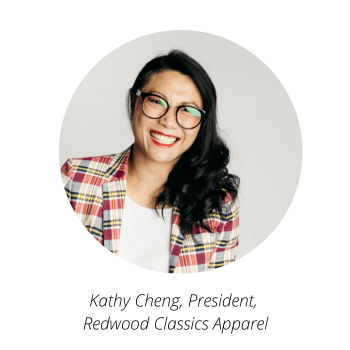(Editor’s Note: PPAI Media’s new Voices series introduces the opinions and advice of promo industry influencers on a variety of topics for which they specialize. The opinions and ideas belong to the individual writer and may not represent those of PPAI or their respective company.)
Environmental, Social, and Corporate Governance (ESG) is a term gaining more and more attention in the promotional products community, and with good reason.
This concept originated from the United Nations’ Sustainable Development Goals and has been used by investors to analyze their organizations and how they measure up to the new frontier of socially-conscious business practices. The UN Sustainable Development Goals were created with the express purpose of making the world a more equitable, hospitable, and healthier place by 2030.
Arguably, our industry has focused on the environmental aspect as its top priority, but we need to approach these 17 goals holistically.
Here, ESG plays an integral role – its existence will enable us all to get on the same page, work toward the same goals, and implement the same operating standards regardless of where we fit on the supply chain.

However, there is still one big problem: There needs to be a gold standard for accurately measuring key performance indicators across the board to determine if we are meeting these goals in our companies and as an industry. For example, at my company Redwood Classics Apparel, our factory undergoes frequent audits by our brand partners. But, depending on the brand, the auditor, and the standards used, our factory could score very differently in each audit, even if they were conducted in the same week.
So, while it is a very positive step that we are discussing ESG and working toward it, there is still so much work to be done.
To make it easier to understand, I look at ESG like a three-legged stool: One leg is about people, one is about the planet, and one is about profits. All three legs need to be appropriately balanced for us to succeed.
The “3 Ps” are not negotiable. They are all inextricably linked and must be adequately nourished and balanced within a business to be stable. Focusing too much on profit at the expense of the planet and people is not sustainable in the long run.
We must balance these three pillars for our businesses to thrive. While it is natural for business leaders to want to focus on the bottom line first above all else, I promise you that taking care of the other two pillars of people and the planet will help your bottom line in the long run.

The statistics show this to be true: 85% of consumers have a more positive image of a product or company when it supports a cause they care about; 92% want to buy a product that supports a cause; and 72% of consumers believe companies should have a legal responsibility to people and the planet. From a 2019 survey by Aflac, these figures are not an anomaly. This is the future.
It’s not just from a consumer perspective that we need to examine ESG, however. As mergers and acquisitions continue to be strong in our industry, the social factors in ESG are likely to become even more critical to investors and stakeholders. These are key to retaining talented employees and have a direct and measurable impact on a business’s bottom line. End buyer stakeholders will look for social metrics to include in non-financial disclosures to help better measure and compare distributor performances.
It has been shown over the past couple of years that companies with strong social metrics who give ESG the attention it deserves are in far better positions to weather difficult times.
Leading distributor HALO has shown its commitment on these topics, appointing PPAI’s immediate past chair Dawn Olds, MAS, to senior vice president of industry relations at HALO, meanwhile rebounding from the pandemic as well as any company. In January, HALO announced that it had crossed the $1 billion revenue mark for the first time in 2022. People, planet and profit can indeed coincide.
If this feels daunting, it is essential to acknowledge that we do not have all the answers, and it is OK not to be perfect. ESG is a journey, not a destination. It requires community support to succeed. Lean on your peers, networks, and memberships in organizations that promote supplier diversity to help you.
Over the next few months, I will explore the three “legs” of ESG to help you understand them more thoroughly and realize how you can put each into practice in your business.
ESG is a journey of learning and growth that will ultimately benefit us all. So let’s start this journey together.
Cheng is the president of Redwood Classics Apparel (PPAI 696010, IS) and a leading industry advocate on corporate social responsibility. She earned Ascend Canada’s Woman of Distinction Award for 2022.


